Nationality American Children Kitty Bruce Role Comedian | Name Lenny Bruce Years active 1947–1966 | |
 | ||
Birth name Leonard Alfred Schneider Born October 13, 1925Mineola, New York, United States ( 1925-10-13 ) Medium Stand-up, film, television, books Genres Satire, political satire, black comedy, improvisational comedy, blue comedy Subject(s) American culture, American politics, race relations, religion, human sexuality, obscenity, pop culture Similar People George Carlin, Bill Hicks, Richard Pryor, Honey Bruce, Kitty Bruce | ||
Lenny Bruce - How To Relax Your Colored Friends At Parties (1961)
Leonard Alfred Schneider (October 13, 1925 – August 3, 1966), better known by his stage name Lenny Bruce, was a Jewish-American stand-up comedian, social critic and satirist. He was renowned for his open, free-style and critical form of comedy which integrated satire, politics, religion, sex, and vulgarity. His 1964 conviction in an obscenity trial was followed by a posthumous pardon, the first in the history of New York state, by then-Governor George Pataki in 2003.
Contents
- Lenny Bruce How To Relax Your Colored Friends At Parties 1961
- MORT SAHL DISCUSSES LENNY BRUCE
- Early life
- Career
- Personal life
- Legal troubles
- Obscenity arrests
- Later years
- Death and posthumous pardon
- Legacy
- In popular culture
- Books by andor about Bruce
- References

He paved the way for future outspoken counterculture-era comedians, and his trial for obscenity is seen as a landmark for freedom of speech in the United States. In 2017, Rolling Stone magazine ranked him third (behind disciples Richard Pryor and George Carlin) on its list of the 50 best stand-up comics of all time.
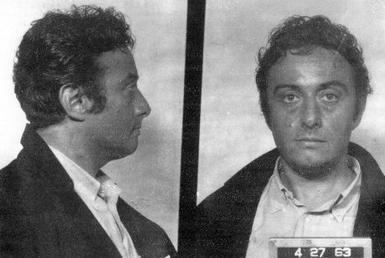
MORT SAHL DISCUSSES LENNY BRUCE
Early life
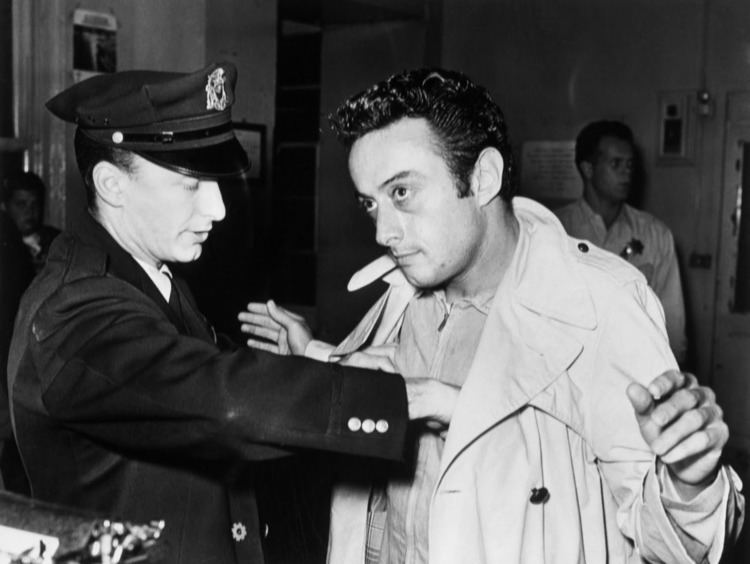
Lenny Bruce was born Leonard Alfred Schneider in Mineola, New York, grew up in nearby Bellmore, and attended Wellington C. Mepham High School. His parents divorced when he was five years old (the documentary Lenny Bruce: Swear to Tell the Truth claims he was eight years old), and Lenny lived with various relatives over the next decade. His British-born father, Myron (Mickey) Schneider, was a shoe clerk and Lenny saw him very infrequently. Bruce's mother, Sally Marr (real name Sadie Schneider, born Sadie Kitchenberg), was a stage performer and had an enormous influence on Bruce's career.
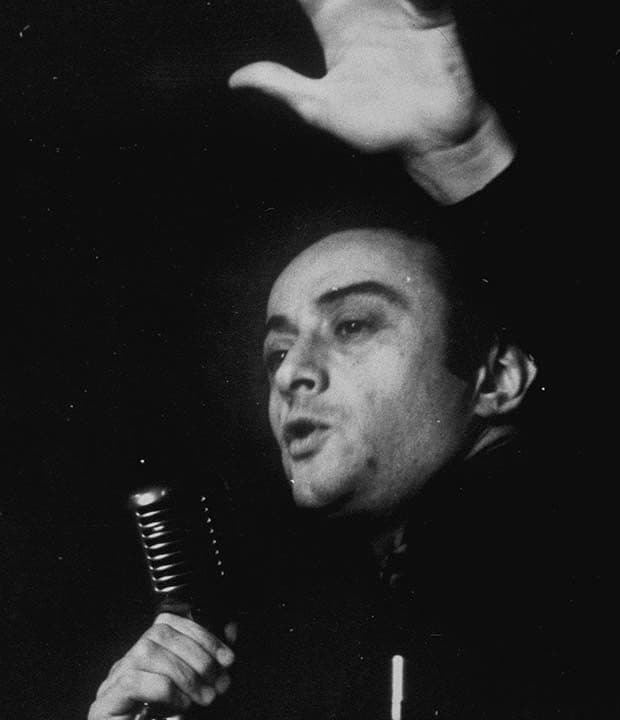
After spending time working on a farm, Bruce joined the United States Navy at the age of 16 in 1942, and saw active duty during World War II aboard the USS Brooklyn (CL-40) fighting in Northern Africa, Palermo, Italy in 1943 and Anzio, Italy in 1944. In May 1945, after a comedic performance for his shipmates in which he was dressed in drag, his commanding officers became upset. He defiantly convinced his ship's medical officer that he was experiencing homosexual urges. This led to his dishonorable discharge in July 1945. However, he had not admitted to or been found guilty of any breach of naval regulations and successfully applied to have his discharge changed to "Under Honorable Conditions ... by reason of unsuitability for the naval service". In 1959, while taping the first episode of Hugh Hefner's Playboy's Penthouse, Bruce talked about his Navy experience and showed a tattoo he received in Malta in 1942.

After a short stint in California spent living with his father, Bruce settled in New York City, hoping to establish himself as a comedian. However, he found it difficult to differentiate himself from the thousands of other showbusiness hopefuls who populated the city. One locale where they congregated was Hanson's, the diner where Bruce first met the comedian Joe Ancis, who had a profound influence on his approach to comedy. Many of Bruce's later routines reflected his meticulous schooling at the hands of Ancis. According to Bruce's biographer Albert Goldman, Ancis' humor involved stream-of-consciousness sexual fantasies and references to jazz.
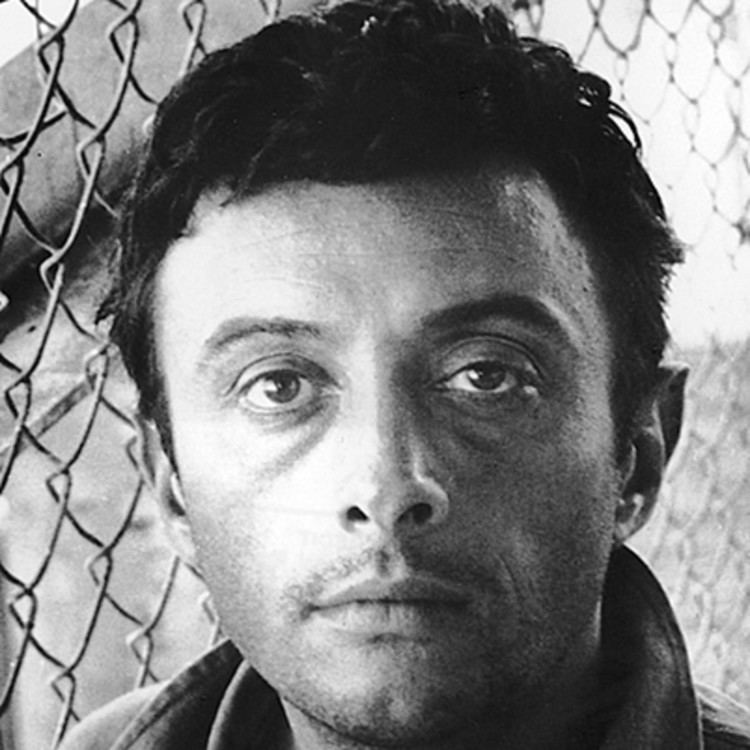
Lenny took the stage as "Lenny Marsalle" one evening at the Victory Club, as a stand-in master of ceremonies for one of his mother's shows. His ad-libs earned him some laughs. Soon afterward, in 1947, just after changing his last name to Bruce, he earned $12 and a free spaghetti dinner for his first stand-up performance in Brooklyn. He was later a guest—and was introduced by his mother, who called herself "Sally Bruce"—on the Arthur Godfrey's Talent Scouts radio program, doing a Sid Caesar–inspired bit, "The Bavarian Mimic", featuring impressions of American movie stars (e.g., Humphrey Bogart, James Cagney, and Edward G. Robinson).
Career
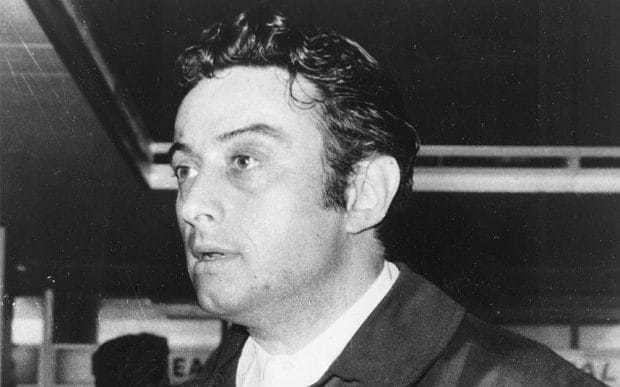
Bruce's early comedy career included writing the screenplays for Dance Hall Racket in 1953, which featured Bruce, his wife Honey Harlow, and mother Sally Marr in roles; Dream Follies in 1954, a low-budget burlesque romp; and a children's film, The Rocket Man, in 1954. In 1956 Frank Ray Perilli, a fellow nightclub comedian who eventually became a screenwriter of two dozen successful films and plays, became a mentor and part-time manager of Lenny Bruce. Through Perilli, Bruce met and collaborated with photojournalist William Karl Thomas on three screenplays (Leather Jacket, Killer's Grave and The Degenerate), none of which made it to the screen, and the comedy material on the first three albums. In 1957 Thomas booked Bruce into The Slate Brothers nightclub, where Bruce was fired the first night for what Variety headlined as "blue material,"; this led to the theme of Bruce’s first solo album on Fantasy Records, The Sick Humor of Lenny Bruce, for which Thomas shot the album cover. Thomas also shot other album covers, acted as cinematographer on abortive attempts to film their screenplays, and in 1989 authored a memoir of their ten-year collaboration titled Lenny Bruce: The Making of a Prophet, and in 2016 a biography of Frank Ray Perilli titled The Candy Butcher, which devotes a chapter to Perilli’s ten-year collaboration with Bruce.
Bruce released a total of four albums of original material on Berkeley-based Fantasy Records, with rants, comic routines, and satirical interviews on the themes that made him famous: jazz, moral philosophy, politics, patriotism, religion, law, race, abortion, drugs, the Ku Klux Klan, and Jewishness. These albums were later compiled and re-released as The Lenny Bruce Originals. Two later records were produced and sold by Bruce himself, including a 10-inch album of the 1961 San Francisco performances that started his legal troubles. Starting in the late 1950s, other unissued Bruce material was released by Alan Douglas, Frank Zappa and Phil Spector, as well as Fantasy. Bruce developed the complexity and tone of his material in Enrico Banducci's North Beach nightclub, the "hungry i", where Mort Sahl had earlier made a name for himself.
Branded a "sick comic"—though it was the perceived "sickness" of modern society that he was railing about—Bruce was essentially blacklisted from television, and when he did appear thanks to sympathetic fans like Steve Allen or Hugh Hefner, it was with great concessions to Broadcast Standards and Practices. Jokes that might offend, like a bit on airplane glue-sniffing teenagers that was done live for The Steve Allen Show in 1959, had to be typed out and pre-approved by network officials.
His growing fame led to appearances on the nationally televised Steve Allen Show, where he made his debut with an unscripted comment on the recent marriage of Elizabeth Taylor to Eddie Fisher, wondering, "will Elizabeth Taylor become bar mitzvahed?" On February 3, 1961, in the midst of a severe blizzard, he gave a famous performance at Carnegie Hall in New York. It was recorded and later released as a three-disc set, titled The Carnegie Hall Concert. In the liner notes, Albert Goldman described it as follows:
This was the moment that an obscure yet rapidly rising young comedian named Lenny Bruce chose to give one of the greatest performances of his career. ... The performance contained in this album is that of a child of the jazz age. Lenny worshiped the gods of Spontaneity, Candor and Free Association. He fancied himself an oral jazzman. His ideal was to walk out there like Charlie Parker, take that mike in his hand like a horn and blow, blow, blow everything that came into his head just as it came into his head with nothing censored, nothing translated, nothing mediated, until he was pure mind, pure head sending out brainwaves like radio waves into the heads of every man and woman seated in that vast hall. Sending, sending, sending, he would finally reach a point of clairvoyance where he was no longer a performer but rather a medium transmitting messages that just came to him from out there — from recall, fantasy, prophecy.
A point at which, like the practitioners of automatic writing, his tongue would outrun his mind and he would be saying things he didn't plan to say, things that surprised, delighted him, cracked him up — as if he were a spectator at his own performance!
Personal life
In 1951, Bruce met his future wife, Honey Harlow, a stripper from Baltimore, Maryland. They were married that same year, and Bruce was determined to have her end her work as a stripper.
Bruce and Harlow eventually left New York City in 1953 for the West Coast, where they got work as a double act at the Cup and Saucer in Los Angeles, California. Bruce then went on to join the bill at the club Strip City. Harlow found employment at the Colony Club, which was widely known to be the best burlesque club in Los Angeles at the time.
Bruce left Strip City in late 1954 and found work within the San Fernando Valley at a variety of strip clubs. As the master of ceremonies, his job was to introduce the strippers while performing his own ever-evolving material. The clubs of the Valley provided the perfect environment for Bruce to create new routines: according to Bruce's primary biographer, Albert Goldman, it was "precisely at the moment when he sank to the bottom of the barrel and started working the places that were the lowest of the low" that he suddenly broke free of "all the restraints and inhibitions and disabilities that formerly had kept him just mediocre and began to blow with a spontaneous freedom and resourcefulness that resembled the style and inspiration of his new friends and admirers, the jazz musicians of the modernist school."
Honey and Lenny's daughter Kitty Bruce was born in 1955. He had an affair with the jazz singer Annie Ross in the late 1950s. In 1959, Lenny's divorce from Honey was finalized.
Legal troubles
Bruce's desire to end his wife's stripper days led him to pursue schemes that were designed to make as much money as possible. The most notable was the Brother Mathias Foundation scam, which resulted in Bruce's arrest in Miami, Florida in 1951 for impersonating a priest. He had been soliciting donations for a leper colony in British Guiana (now Guyana) under the auspices of the "Brother Mathias Foundation", which he had legally chartered – the name was his own invention, but possibly referred to the actual Brother Matthias who had befriended Babe Ruth at the Baltimore orphanage to which Ruth had been confined as a child. Bruce had stolen several priests' clergy shirts and a clerical collar while posing as a laundry man. He was found not guilty because of the legality of the New York state-chartered foundation, the actual existence of the Guiana leper colony, and the inability of the local clergy to expose him as an impostor. Later, in his semifictional autobiography How to Talk Dirty and Influence People, Bruce revealed that he had made about $8,000 in three weeks, sending $2,500 to the leper colony and keeping the rest.
Obscenity arrests
On October 4, 1961, Bruce was arrested for obscenity at the Jazz Workshop in San Francisco; he had used the word cocksucker and riffed that "to is a preposition, come is a verb", that the sexual context of come is so common that it bears no weight, and that if someone hearing it becomes upset, he "probably can't come". Although the jury acquitted him, other law enforcement agencies began monitoring his appearances, resulting in frequent arrests under charges of obscenity.
Bruce was arrested again in 1961, in Philadelphia, for drug possession and again in Los Angeles, California, two years later. The Los Angeles arrest took place in then-unincorporated West Hollywood, and the arresting officer was a young deputy named Sherman Block, who later became County Sheriff. The specification this time was that the comedian had used the word schmuck, an insulting Yiddish term that is an obscene term for penis.
On December 5, 1962, Bruce was arrested at the legendary Gate of Horn folk club in Chicago. The same year he played at Peter Cook's The Establishment club in London, and in April the next year he was barred from entering England by the Home Office as an "undesirable alien".
In April 1964, he appeared twice at the Cafe Au Go Go in Greenwich Village, with undercover police detectives in the audience. He was arrested along with the club owners, Howard and Elly Solomon, who were arrested for allowing an obscene performance to take place. On both occasions, he was arrested after leaving the stage, the complaints again pertaining to his use of various obscenities.
A three-judge panel presided over his widely publicized six-month trial, prosecuted by Manhattan Assistant D.A. Richard Kuh, with Ephraim London and Martin Garbus as the defense attorneys. Bruce and club owner Howard Solomon were both found guilty of obscenity on November 4, 1964. The conviction was announced despite positive testimony and petitions of support from – among other artists, writers and educators – Woody Allen, Bob Dylan, Jules Feiffer, Allen Ginsberg, Norman Mailer, William Styron, and James Baldwin, and Manhattan journalist and television personality Dorothy Kilgallen and sociologist Herbert Gans. Bruce was sentenced on December 21, 1964 to four months in a workhouse; he was set free on bail during the appeals process and died before the appeal was decided. Solomon later saw his conviction overturned; Bruce, who died before the decision, never had his conviction stricken. Bruce later received a full posthumous gubernatorial pardon.
Later years
Despite his prominence as a comedian, Bruce appeared on network television only six times in his life. In his later club performances, Bruce was known for relating the details of his encounters with the police directly in his comedy routine. These performances often included rants about his court battles over obscenity charges, tirades against fascism and complaints that he was being denied his right to freedom of speech.
Bruce was banned outright from several U.S. cities, and in September 1962, his only visit to Australia caused a media storm - although, contrary to popular belief, he was not banned, nor was he forced to leave the country. Bruce was booked for a two-week engagement at Aaron's Exchange Hotel, a small pub in central Sydney, New South Wales by the American-born, Australian-based promoter Lee Gordon, who was by then deeply in debt, nearing the end on his formerly successful career, and desperate to save his business. Bruce's first show at 9pm on 6 September was uneventful, but his second show at 11pm led to a major public controversy. Bruce was heckled by audience members during his performance, and when local actress, Barbara Wyndon, stood up and complained that Bruce was only talking about America, and asked him to talk about something different, a clearly annoyed Bruce responded "Fuck you, madam. That's different, isn't it?" His remark shocked some members of the audience and several walked out. By the next day the local press had blown the incident up into a major controversy, with several Sydney papers denouncing Bruce as "sick" and one even illustrating their story with a retouched photograph appearing to show Bruce giving a fascist salute. The venue owners immediately cancelled the rest of Bruce's performances, and he retreated to his Kings Cross hotel room. Local university students (including future Oz magazine editor Richard Neville) who were fans of Bruce's humour tried to arrange a performance at the Roundhouse at the University of New South Wales, but at the last minute the university's Vice-Chancellor rescinded permission to use the venue, with no reason given. and an interview he was scheduled to give on Australian television was cancelled in advance by the Australian Broadcasting Commission. Bruce remained largely confined to his hotel, but eight days later Bruce gave his third and last Australian concert at the Wintergarden Theatre in Sydney's eastern suburbs. Although the theatre had a capacity of 2100, only 200 people attended, including a strong police presence, and in the event Bruce gave what was described as a "subdued" performance. It was long rumoured that a recording of Bruce's historic performance was made by police, but it was in fact recorded by a local jazz saxophonist, Sid Powell, who brought a portable tape recorder to the show. The tape was rediscovered in 2011 in the possession of Australian singer Sammy Gaha, who had acted as Bruce's chauffeur during his visit, and it was subsequently donated to the Lenny Bruce audio collection at Brandeis University. Bruce left the country a few days later and spoke little about the experience afterwards.
Increasing drug use also affected his health. By 1966, he had been blacklisted by nearly every nightclub in the United States, as owners feared prosecution for obscenity. Bruce gave a famous performance at the Berkeley Community Theatre in December 1965. It was recorded and became his last live album, titled The Berkeley Concert; his performance here has been described as lucid, clear and calm, and one of his best. His last performance took place on June 25, 1966 at The Fillmore Auditorium in San Francisco, on a bill with Frank Zappa and The Mothers of Invention. The performance was not remembered fondly by Bill Graham, whose memoir describes Bruce as "whacked out on amphetamine"; Graham thought that Bruce finished his set emotionally disturbed. Zappa asked Bruce to sign his draft card, but the suspicious Bruce refused.
At the request of Hugh Hefner and with the aid of Paul Krassner, Bruce wrote an autobiography. Serialized in Playboy in 1964 and 1965, this material was later published as the book How to Talk Dirty and Influence People. Hefner had long assisted Bruce's career, featuring him in the television debut of Playboy's Penthouse in October 1959.
During this time, Bruce also contributed a number of articles to Paul Krassner's satirical magazine The Realist.
Death and posthumous pardon
On August 3, 1966, a bearded Lenny Bruce was found dead in the bathroom of his Hollywood Hills home at 8825 W. Hollywood Blvd. The official photo, taken at the scene, showed Bruce lying naked on the floor, a syringe and burned bottle cap nearby, along with various other narcotics paraphernalia. Record producer Phil Spector, a friend of Bruce, bought the negatives of the photographs to keep them from the press. The official cause of death was "acute morphine poisoning caused by an overdose."
His remains were interred in Eden Memorial Park Cemetery in Mission Hills, California, but an unconventional memorial on August 21 was controversial enough to keep his name in the spotlight. The service saw over 500 people pay their respects, led by Spector. Cemetery officials had tried to block the ceremony after advertisements for the event encouraged attendees to bring box lunches and noisemakers. Dick Schaap eulogized Bruce in Playboy, with the memorable last line: "One last four-letter word for Lenny: Dead. At forty. That's obscene."
His epitaph reads: "Beloved father – devoted son/Peace at last."
Bruce is survived by his daughter, Kitty Bruce (born Brandy Kathleen Bruce), who lives in Pennsylvania.
At the time of his death, his girlfriend was comedian Lotus Weinstock.
On December 23, 2003, 37 years after Bruce's death, New York Governor George Pataki granted him a posthumous pardon for his obscenity conviction.
Legacy
Bruce was the subject of the 1974 biographical film Lenny, directed by Bob Fosse and starring Dustin Hoffman (in an Academy Award-nominated Best Actor role), and based on the Broadway stage play of the same name written by Julian Barry and starring Cliff Gorman in his 1972 Tony Award winning role. In addition, the main character's editing of a fictionalized film version of Lenny was a major part of Fosse's own biopic, the 1979 Academy Award-nominated All That Jazz.
The documentary Lenny Bruce: Swear to Tell the Truth, directed by Robert B. Weide and narrated by Robert De Niro, was released in 1998. It was nominated for the Academy Award for Best Documentary Feature
In 2004, Comedy Central listed Bruce at number three on its list of the 100 Greatest Stand-Ups of All-Time, placing above Woody Allen (4th) and below Richard Pryor (1st) and George Carlin (2nd).
In popular culture
Books by and/or about Bruce
By others:
